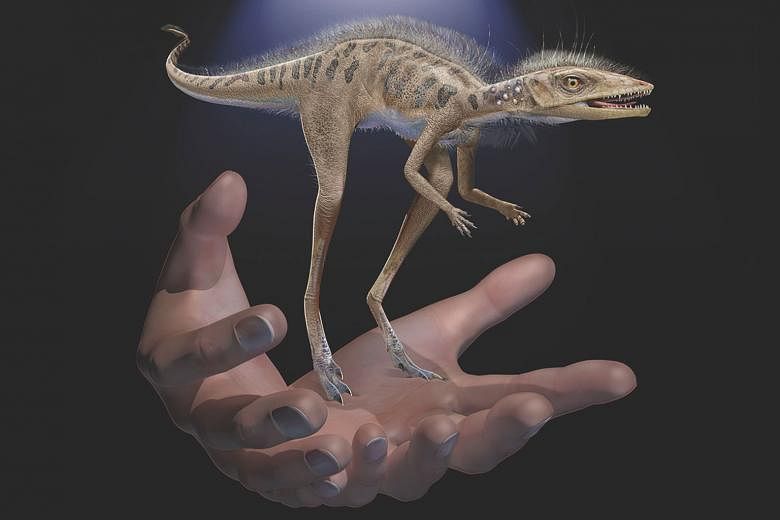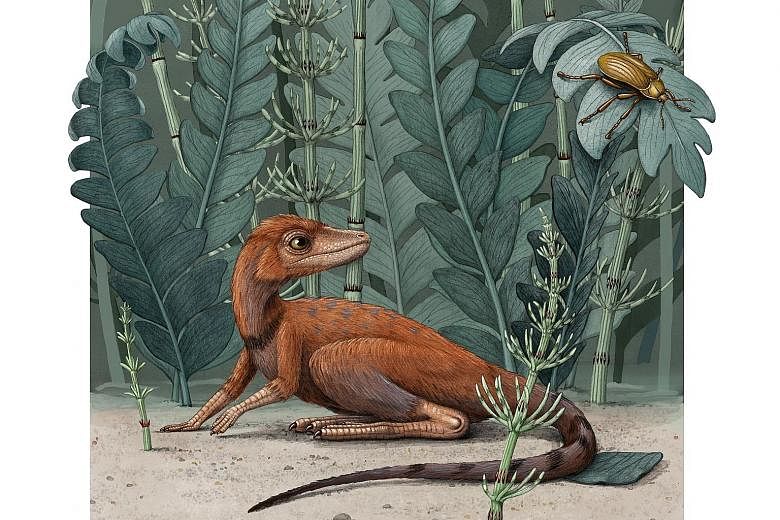Dinosaurs and the flying reptiles called pterosaurs - both known for achieving great size - had humble beginnings, as shown by a diminutive insect-eating reptile from Madagascar that was a forerunner and close relative of both groups.
Scientists have described fossils of a Triassic Period creature, called Kongonaphon kely, that measured about 40cm long and stood 10cm tall at the hip. It inhabited a floodplain region of what is now south-western Madagascar about 237 million years ago.
Kongonaphon was a long-legged predator that may have been bipedal. The shape of its small, conical and unserrated teeth and an examination of microwear on them suggest that Kongonaphon, whose scientific name means "tiny bug slayer", ate insects or other small invertebrates.
It was a member of a group called Ornithodira spanning the evolutionary lineage that led to dinosaurs and pterosaurs, part of a larger assemblage called archosaurs that also included the crocodilian lineage.
"Based on statistical analyses of body size, we argue that dinosaurs and pterosaurs evolved from a miniaturised ancestor," said North Carolina Museum of Natural Sciences paleontologist Christian Kammerer, the lead author of the research published in the Proceedings of the National Academy of Sciences.
"Evolution of gigantism from tiny ancestors is not uncommon in the fossil record," added study co-author and paleontologist John Flynn of the American Museum of Natural History in New York.
Dinosaurs and pterosaurs first appeared roughly 230 million years ago. The early dinosaur Herrerasaurus was about 6m long. The early pterosaur Eudimorphodon was pigeon-sized. Both groups eventually achieved gigantic proportions. The pterosaur Quetzalcoatlus had a wingspan of about 10.5m, akin to an F-16 fighter. The dinosaur Argentinosaurus reached about 35m long.
In the context of this later gigantism, having an animal like Kongonaphon "that could fit into your hands seems almost paradoxical", Dr Kammerer said.
"However, it fits the broader pattern that we observe at this time. There was a sustained trend towards smaller adult body sizes in the early history of this lineage. This is based not only on Kongonaphon, but also on a series of small-bodied reptiles near the common ancestry of the dinosaur and pterosaur lineages."
REUTERS


